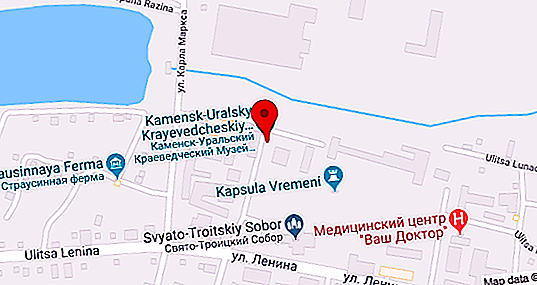One of the representatives of the honeysuckle family is a beautiful deciduous shrub called weigela. In the suburbs, planting and caring for it require certain knowledge, because in these climatic conditions it is more difficult for heat-loving plants to survive.
general characteristics
In nature, this shrub is found mainly in the eastern and southeastern territories of Asia, as well as in the Far East. In total, there are 15 species of weigels, of which 7 are common as a culture. Their height is different, depending on the variety, but on average is about two meters. The shrub is erect, with velvety leaves with serrate edges opposite the branches, dark green in color.
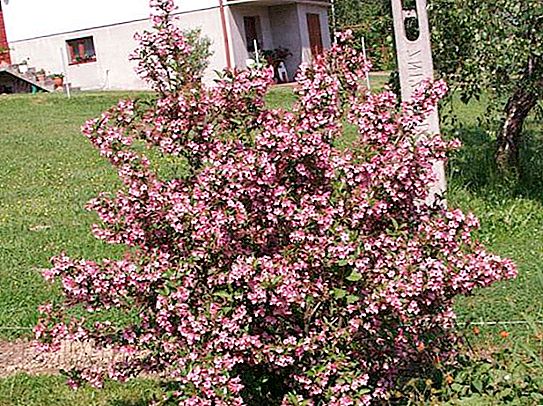
With its flowering weigel can please twice a season - at the beginning and at the end of summer. During this period, the bush is covered with large funnel-shaped flowers, similar to bells. They are located singly or in groups of several pieces, forming a loose inflorescence. The color of the flowers is different - red, pink, yellow, cream or white. Interestingly, it is not always the same. Only the open corollas are pale, but gradually acquire a bright and saturated color.
This shrub can look spectacular in any corner of the garden. Thanks to varieties that are resistant to cold, the decoration of many areas is the weigel in the suburbs. Planting and care, types and characteristics of cultivation - all this we will discuss in this article.
Suitable conditions
First of all, you need to choose the right place for landing. The following conditions are important here:
- The soil should be neutral or limestone, always permeable.
- The site must be selected well-lit by the sun, only light partial shade is permissible.
Stagnant water, lack of light can inhibit the plant.
Weigela in the suburbs
Planting and caring for this plant will give excellent results, if you do not make the mistake of choosing a variety that is most adapted to climatic conditions. In this case, the shrub will retain its shape for many years. The following varieties are suitable for cultivation in the Moscow Region:
Weigela Middendorff is a stunted shrub whose height barely reaches one and a half meters. It has the longest flowering period (almost a month) and prefers moist peaty soils. Leaves almost until October retain their color. The bell-shaped flowers are yellow or cream in color.
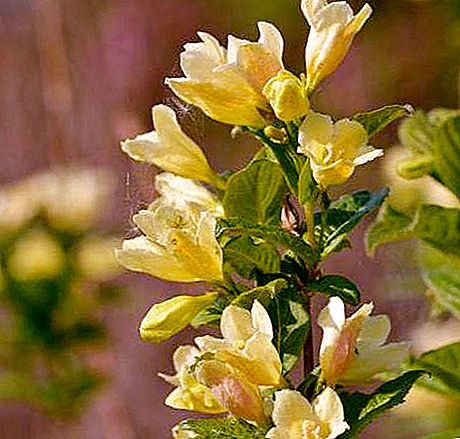
- Weigela early - one of the most beautiful species. The height of the plant is from 150 to 250 cm. The bush is very lush, during the two-week flowering period it is covered first with purple buds, which gradually turn into bright pink or lilac funnel-shaped flowers. Leaves in summer have a bright green color, and closer to autumn they acquire a brownish tint. Due to its unpretentiousness, this is the most common weigel in the suburbs. Landing and caring for it does not require much effort.
- Weigela garden originally from deciduous forests of Japan. The height of this shrub is about a meter. The Weigel is distinguished by an unusual garden color of flowers (pinkish-carmine), which cover the bush very abundantly.
Landing rules
Plants planted in autumn may die before they take root. Therefore, the most suitable time for planting is spring. It is best to purchase three-year-old seedlings, they adapt more quickly. The place for the Weigela is chosen well-lit by the sun and protected from the wind. This shrub prefers fertile soil, which must be thoroughly loosened after each irrigation, preventing its compaction. Once a place is selected, it is required that planting and care are properly performed for a plant named Weigel. In the suburbs, the competent implementation of these measures is of particular importance in connection with lower winter temperatures.
A landing pit about 50 cm deep is prepared in advance. A layer of sand or gravel is poured at the bottom of it, which will perform a drainage function to protect the root system from decay. It is important that the distance between the bushes is maintained at least two meters.
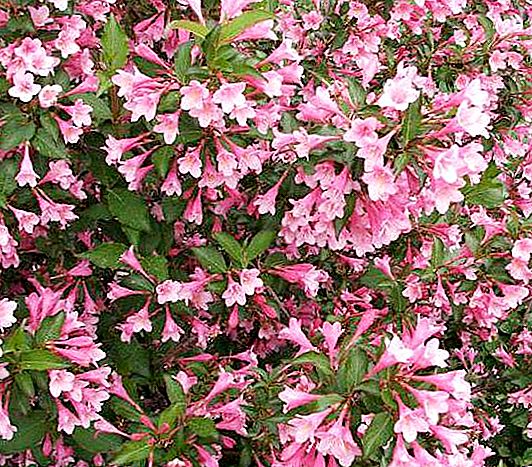
It is recommended to treat the roots before planting with a stimulant, after which carefully place the seedling in the hole and sprinkle with the prepared soil mixture. It is made up of sand, sod land and humus (in a ratio of 2: 2: 1). As fertilizer, you can add potassium salt and superphosphate (40 and 60 grams, respectively, each per well). It is imperative to mulch the soil in a half meter around the seedling, pouring for this a layer of 10 cm of sawdust, tree bark or peat.
Care
Although some varieties of shrubs are distinguished by their unpretentiousness, nevertheless, sometimes a wiggle behaves quite capriciously in the Moscow region. Planting and care, plant growing rules - this knowledge will help to avoid many problems associated with such a thermophilic culture.
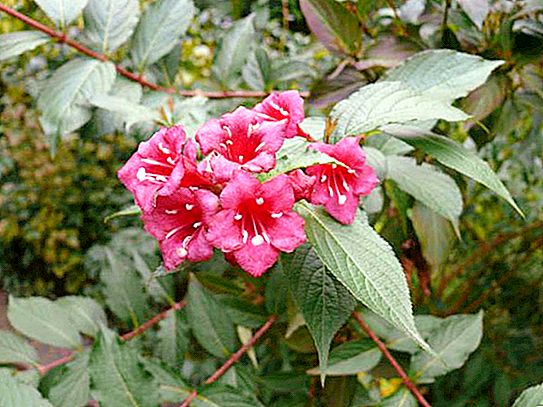
After each watering (and it is required to be carried out regularly, especially in the dry period), the soil must be loosened. It should always be wet, mulching will help protect it from drying out.
Top dressing is applied several times during the season. In the spring, to restore the plant after frost, the bush needs complex mineral fertilizer. Before flowering, it must be fed with double phosphate with potassium sulfate (30 g each in a bucket of water). In the fall, potash and phosphorus are added to prepare the plant for winter.
Breeding
When the planted bush turns into a beautiful blooming ball by summer, there is a desire to place several more such plants on the site. It is not difficult to do this, because there are several ways to reproduce weigels.
Using cuttings - the most common way that weigel can propagate in the suburbs. Planting and caring for seedlings in this case is not very difficult. In April, green shoots (5 mm thick and 20 cm long) are cut off at right angles, treated with a growth stimulant and placed in a warm and dark room for 12 hours. Then planted in the soil mixture to a depth of 10 cm under a plastic film. Watering is done daily. After 25-40 days, roots appear. The plant can be transplanted to a permanent place the next year.
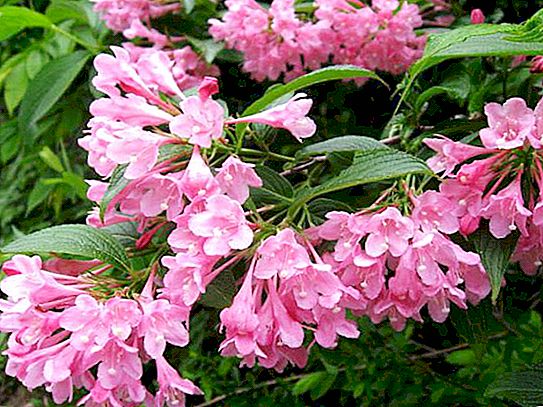
To plant seeds, they need to be collected and sown in a prepared box with soil, sprinkled with a layer of sand and covered with glass, maintaining a certain humidity. Shoots appear after about 3 weeks.
Gardeners often choose reproduction using layering. The lower branch of the bush is tilted to the ground, treated with a stimulant and instilled. After some time, the layering takes root, after a year it can be transplanted to a new place.
Winter preparations
It is not entirely true to believe that the most important thing necessary for a weigel to take root in the Moscow region is landing and care. The survival process of this plant in winter largely depends on the quality of its preparation for frost. This is especially important for young bushes. They can be covered with spruce branches or special material. A tall bush needs to be tied up and laid out near the trunk with a thick layer of straw or spruce branches.

